
Ultimates Pet Food Reviews
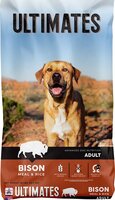
Ultimates
Whole Grain
Bison Meal & Rice Recipe For Adult Dogs
Ultimates
Whole Grain Bison Meal & Rice Recipe For Adult Dogs
First Five Ingredients
bison mealrice
pea
brown rice
beef meal
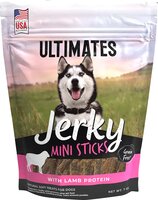
Ultimates
Jerky Mini Sticks
With Lamb Protein
Ultimates
Jerky Mini Sticks With Lamb Protein
First Five Ingredients
lamb mealpea
tapioca
pea starch
glycerin
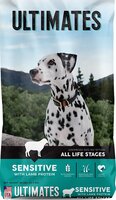
Ultimates
Sensitive
With Lamb Protein For Dogs
Ultimates
Sensitive With Lamb Protein For Dogs
First Five Ingredients
lamb mealbrown rice
oatmeal
pearled barley
ground rice
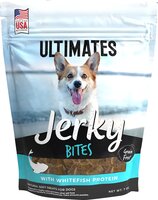
Ultimates
Jerky Bites
With Whitefish Protein
Ultimates
Jerky Bites With Whitefish Protein
First Five Ingredients
whitefish mealpea
tapioca
pea starch
glycerin
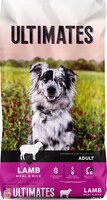
Ultimates
Whole Grain
Lamb Meal & Rice Recipe For Adult Dogs
Ultimates
Whole Grain Lamb Meal & Rice Recipe For Adult Dogs
First Five Ingredients
lamb mealbrown rice
pea
rice
pea starch
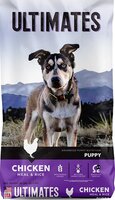
Ultimates
Whole Grain
Chicken Meal & Rice Recipe For Puppies
Ultimates
Whole Grain Chicken Meal & Rice Recipe For Puppies
First Five Ingredients
chicken mealbrown rice
pea
chicken fat
whitefish meal
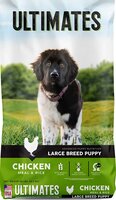
Ultimates
Whole Grain
Chicken Meal & Rice Recipe For Large Breed Puppies
Ultimates
Whole Grain Chicken Meal & Rice Recipe For Large Breed Puppies
First Five Ingredients
chicken mealbrown rice
pea
chicken fat
whitefish meal
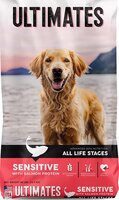
Ultimates
Sensitive
With Salmon Protein For Dogs
Ultimates
Sensitive With Salmon Protein For Dogs
First Five Ingredients
salmon mealbrown rice
oatmeal
pearled barley
whitefish meal
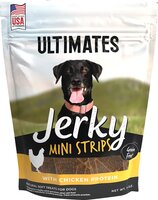
Ultimates
Jerky Mini Strips
With Chicken Protein
Ultimates
Jerky Mini Strips With Chicken Protein
First Five Ingredients
chicken mealpea
tapioca
pea starch
glycerin
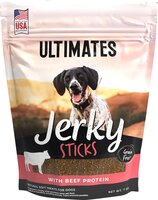
Ultimates
Jerky Sticks
With Beef Protein
Ultimates
Jerky Sticks With Beef Protein
First Five Ingredients
beef mealpea
tapioca
pea starch
glycerin
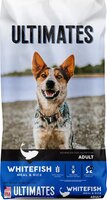
Ultimates
Whole Grain
Whitefish Meal & Rice Recipe For Adult Dogs
Ultimates
Whole Grain Whitefish Meal & Rice Recipe For Adult Dogs
First Five Ingredients
whitefish mealbrown rice
pea
rice
chicken fat
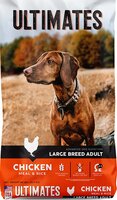
Ultimates
Whole Grain
Chicken Meal & Rice Recipe For Large Breed Adult Dogs
Ultimates
Whole Grain Chicken Meal & Rice Recipe For Large Breed Adult Dogs
First Five Ingredients
chicken mealbrown rice
ground rice
chicken fat
rice bran
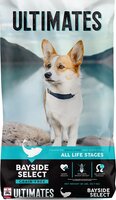
Ultimates
Grain Free
Bayside Select
Ultimates
Grain Free Bayside Select
First Five Ingredients
whitefish mealpotato
pea
pea starch
canola oil
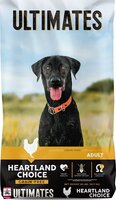
Ultimates
Grain Free
Heartland Choice For Adult Dogs
Ultimates
Grain Free Heartland Choice For Adult Dogs
First Five Ingredients
chicken mealpotato
pea
chicken fat
chickpea
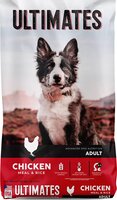
Ultimates
Whole Grain
Chicken Meal & Rice Recipe For Adult Dogs
Ultimates
Whole Grain Chicken Meal & Rice Recipe For Adult Dogs
First Five Ingredients
chicken mealbrown rice
pea
rice
rice bran
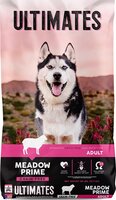
Ultimates
Grain Free
Meadow Prime For Adult Dogs
Ultimates
Grain Free Meadow Prime For Adult Dogs
First Five Ingredients
lamb mealpotato
pea
canola oil
chickpea
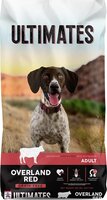
Ultimates
Grain Free
Overland Red For Adult Dogs
Ultimates
Grain Free Overland Red For Adult Dogs
First Five Ingredients
beef mealpotato
pea starch
pea protein
canola oil
